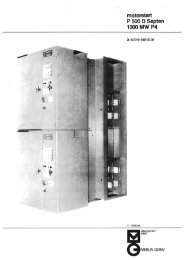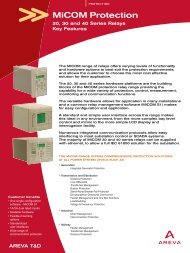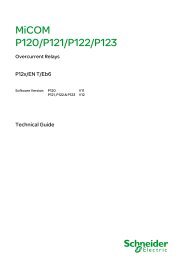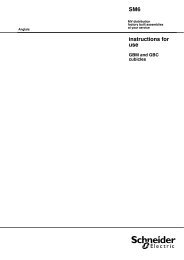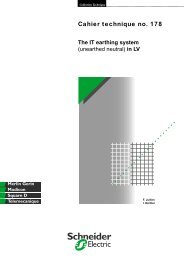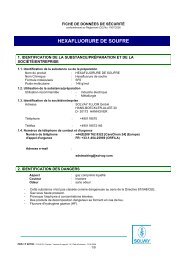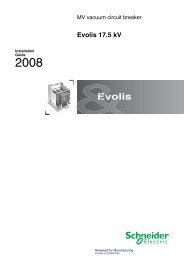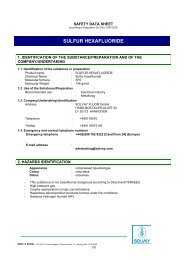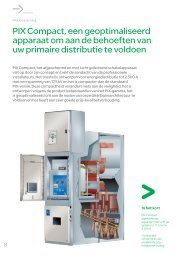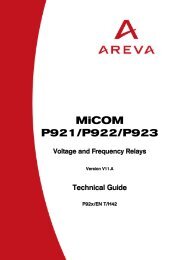Create successful ePaper yourself
Turn your PDF publications into a flip-book with our unique Google optimized e-Paper software.
Expression of the distorted waveAny periodic phenomenon can be representedby a Fourier series as follows:n = ∞y(t) = Y 0 + ∑Y n 2 sin (nωt – ϕn)n = 1where:c Y 0 = the amplitude of the DC component,which is generally zero in electrical powerdistribution (at steady state),c Y n = the rms value of the n th harmoniccomponent,c ϕ n = phase angle of the n th harmoniccomponent when t = 0.Harmonic order amplitudes generally decreaseas frequency increases. According to standards,harmonic orders above 40 are neglected.Rms value of a distorted waveHarmonic quantities are generally expressed interms of their rms value since the heating effectdepends on this value of the distorted waveform.For a sinusoidal quantity, the rms value is themaximum value divided by the square root of 2.For a distorted quantity, under steady-stateconditions, the energy dissipated by the Jouleeffect is the sum of the energies dissipated byeach of the harmonic components:2RI t = RI t + RI t +…+ RIt1 2 2 2 n 22= 1 2 + … + n 2hence : I I I100 %n = ∞∑2i.e. where : I = I n if the resistance cann = 1be considered to be constant.The rms value of a distorted waveform can bemeasured either directly by instrumentsdesigned to measure the true rms value, bythermal means or by spectrum analysers.Individual harmonic ratio and total harmonicdistortionThe industrial harmonic ratios and the totalharmonic distortion quantify the harmonicdisturbances present in a power supply network.c Individual harmonic ratio (or harmonicpercentage)The harmonic ratio expresses the magnitude ofeach harmonic with respect to the fundamental(see fig. 2).The n th harmonic ratio is the ratio of the rmsvalue of the n th harmonic to that of thefundamental.For example, the harmonic ratio of I n is I n /I 1 or100(I n /I 1 ) if expressed as a percentage (notethat here I n is not the nominal or rated current).c Total harmonic distorsion (also referred to asTHD, the total hamronic factor or simply asdistorsion D)The total harmonic distortion quantifies thethermal effect of all the harmonics. It is the ratioof the rms value of all the harmonics to that ofone of the two following quantities (depending onthe definition adopted):v the fundamental (IEC 61000-2-2), which cangive a very high value:D=n = ∞∑ Yn 2n = 2Y1v or (occasionally) the measured disturbancequantity, in which case 0 < D < 1:D=n = ∞∑ Yn 2n = 2n = ∞∑ Yn 2n = 11 5 7 nFig. 2 : the amplitude of a harmonic is often expressedwith respect to that of the fundamental.Unless otherwise indicated, we will use thedefinition adopted by IEC 61000-2-2, whichcorresponds to the ratio of the rms value of theharmonic content to the undistorted current atpower frequency.Cahier Technique <strong>Schneider</strong> <strong>Electric</strong> no. 152 / p.5



